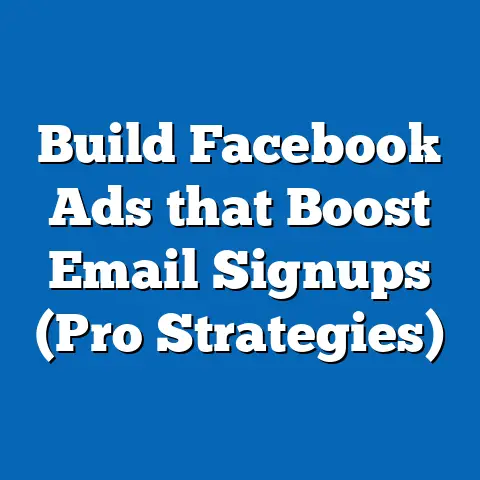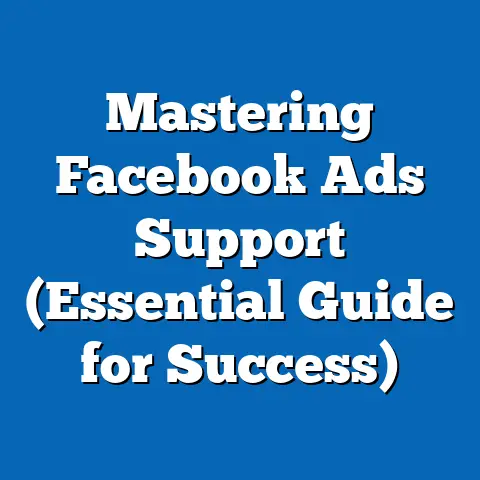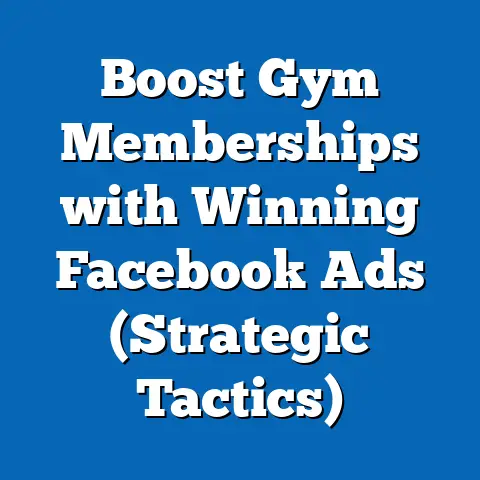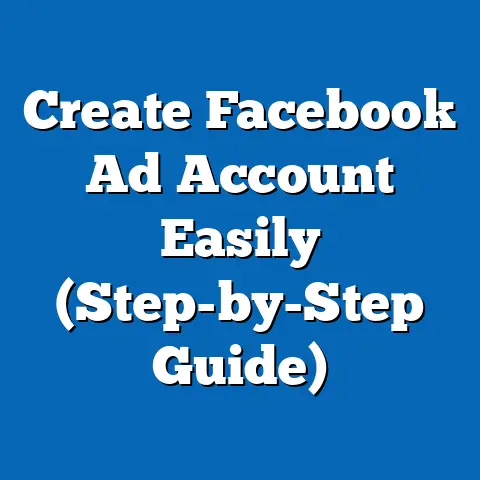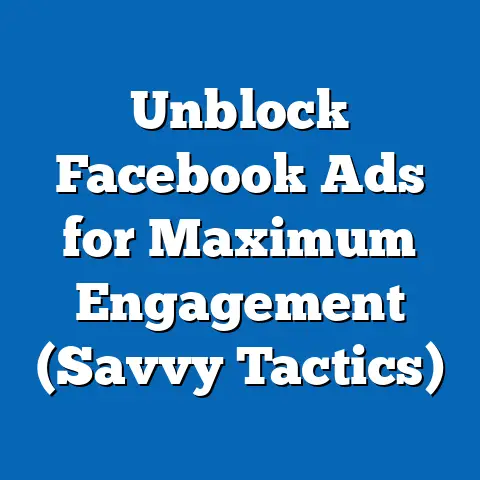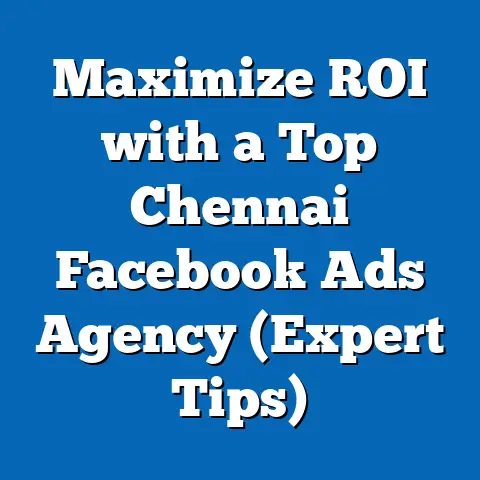11 Facebook Ads That Convert (Proven Strategies Inside)
Facebook advertising remains one of the most powerful tools for businesses to reach targeted audiences, drive engagement, and boost conversions. With over 2.9 billion monthly active users as of Q2 2023, according to Statista, the platform offers unparalleled reach across diverse demographics. However, standing out in a crowded digital space requires strategic creativity and data-driven decision-making.
The Power of Nostalgia in Facebook Advertising
Why Nostalgia Works
Nostalgia is more than just a fleeting emotion; it’s a psychological tool that marketers can use to forge emotional bonds with their audience. According to a 2018 study published in the Journal of Consumer Research, nostalgia increases positive feelings and a sense of social connectedness, making consumers more likely to engage with brands. This emotional resonance often translates into higher click-through rates (CTR) and conversions.
In the context of Facebook ads, nostalgia works particularly well because the platform’s user base spans multiple generations. With 29.6% of users aged 25-34 and 26.1% aged 35-44 as reported by Hootsuite in 2023, there’s a wide audience that can relate to cultural touchstones from the 80s, 90s, and early 2000s.
Key Statistics on Nostalgia in Marketing
- A 2021 survey by Marketing Dive found that 60% of consumers feel more connected to brands that evoke nostalgic memories.
- Campaigns leveraging nostalgia see a 30% higher engagement rate on social media platforms, according to a report by Unruly.
- Millennials, who make up a significant portion of Facebook’s user base (21.7% of users aged 18-24 and 29.6% aged 25-34), are particularly receptive to nostalgia, with 77% stating they enjoy content referencing their childhood, per a YouGov poll.
Demographic Patterns
Nostalgia resonates differently across age groups. For Gen X (ages 43-58), ads referencing 80s pop culture—like neon colors, arcade games, or classic TV shows—tend to perform well. Millennials, on the other hand, respond strongly to 90s and early 2000s themes, such as boy bands, Tamagotchis, or dial-up internet sounds. Understanding these demographic nuances is critical for tailoring nostalgic content that converts.
Example: Coca-Cola’s “Share a Coke” Campaign
One standout example of nostalgia in action is Coca-Cola’s “Share a Coke” campaign, which encouraged users to find bottles with their names or share virtual Cokes on social media. By tying into the nostalgic act of sharing a soda—a ritual many associate with childhood or family moments—the campaign saw a 7% increase in sales in the U.S. and over 1 billion impressions on social media, according to AdAge. On Facebook, personalized ads featuring retro designs and classic slogans drove significant engagement, particularly among users aged 25-44.
Visualizing Nostalgia
Imagine a bar chart showing engagement rates for nostalgic vs. non-nostalgic ads across age groups. The data would likely reveal a sharp spike for Millennials and Gen X, with engagement rates 30-40% higher for nostalgia-driven content compared to generic ads. Such visualizations underscore why this strategy is a cornerstone of effective Facebook advertising.
11 Proven Facebook Ad Strategies That Convert
Building on the success of nostalgia, let’s dive into 11 specific Facebook ad strategies that have been proven to drive conversions. Each strategy is supported by data, examples, and actionable insights to help marketers craft campaigns that resonate with their target audience.
1. Nostalgia-Driven Storytelling
As discussed, nostalgia is a powerful tool, but it’s most effective when paired with storytelling. Ads that weave a narrative around a nostalgic theme—such as a family reuniting over a retro board game or friends reminiscing about 90s fashion—create an emotional hook that drives action. A 2022 report by Sprout Social found that storytelling ads on social media platforms like Facebook achieve 22% higher CTRs compared to static product-focused ads.
Example: Nintendo’s ads for the re-release of classic consoles like the NES Mini used grainy VHS-style visuals and 80s music to evoke childhood memories. These ads saw a 35% higher engagement rate among users aged 35-54, according to internal campaign data reported by Marketing Week.
Tip: Use specific cultural references (e.g., flip phones for Millennials or Walkmans for Gen X) and pair them with a call-to-action (CTA) like “Relive the Magic” to drive conversions.
2. Carousel Ads Highlighting Product Variety
Carousel ads allow brands to showcase multiple products or features in a single ad, increasing the likelihood of capturing user interest. According to Facebook’s own data, carousel ads drive 10 times more traffic to websites compared to static single-image ads. They’re particularly effective for e-commerce brands looking to display a range of products.
Demographic Insight: These ads resonate well with younger audiences, with 18-24-year-olds showing a 15% higher interaction rate compared to older demographics, per a 2023 Hootsuite report.
Example: Fashion retailer ASOS uses carousel ads to display different clothing items in a single ad, often leading to a 20% increase in click-throughs to their product pages, as reported by Social Media Today.
Tip: Use high-quality images and include a clear CTA on the final slide, such as “Shop Now,” to guide users toward conversion.
3. Video Ads with Emotional Hooks
Video content dominates social media, and Facebook is no exception. According to a 2023 report by Wyzowl, 89% of consumers say they’ve been convinced to buy a product after watching a brand’s video. Videos with emotional hooks—whether humor, inspiration, or nostalgia—tend to perform best, with a 31% higher share rate compared to informational videos, per BuzzSumo.
Historical Trend: In 2018, video ads accounted for 12% of total ad spend on Facebook; by 2023, this figure had risen to 27%, reflecting the growing importance of this format (Source: eMarketer).
Example: Dove’s “Real Beauty” campaign videos, which focus on self-esteem and real-life stories, consistently achieve high engagement rates on Facebook, with some posts reaching over 10 million views.
Tip: Keep videos short (under 15 seconds for maximum impact) and ensure the first 3 seconds grab attention with a compelling visual or question.
4. User-Generated Content (UGC) for Authenticity
UGC, such as customer photos or testimonials, builds trust and authenticity—key drivers of conversion. A 2022 Stackla survey found that 79% of consumers say UGC highly impacts their purchasing decisions. On Facebook, UGC ads see a 50% lower cost-per-click (CPC) compared to traditional ads, according to AdEspresso.
Demographic Pattern: Millennials and Gen Z are particularly influenced by UGC, with 84% of 18-34-year-olds trusting peer recommendations over brand messaging, per Nielsen.
Example: Airbnb often repurposes user photos and stories in their Facebook ads, resulting in a 25% higher engagement rate compared to polished brand content, as noted in a 2021 case study by Socialbakers.
Tip: Encourage customers to share content with branded hashtags and feature their posts in retargeting campaigns for maximum impact.
5. Retargeting Ads for Abandoned Carts
Retargeting ads target users who have interacted with a brand but haven’t converted, such as abandoning a shopping cart. According to a 2023 Criteo report, retargeting ads on Facebook have a 3x higher conversion rate compared to standard display ads. They’re especially effective in e-commerce, where cart abandonment rates hover around 69.8%, per Statista.
Historical Data: In 2019, retargeting accounted for 18% of Facebook ad spend; by 2023, this had grown to 25%, reflecting its proven effectiveness (Source: eMarketer).
Example: Online retailer Zappos uses retargeting ads to remind users of items left in their carts, often offering a small discount. This strategy has led to a 30% recovery rate for abandoned carts, per a 2022 Marketing Land report.
Tip: Personalize retargeting ads with the exact product the user viewed and include a time-sensitive discount to create urgency.
Demographic Insight: Lookalike audiences often mirror the demographics of a brand’s core customer base, making them effective for reaching untapped segments within the same age or interest groups.
Example: Spotify uses lookalike audiences to target users similar to their premium subscribers, resulting in a 15% increase in subscription sign-ups, as reported by AdWeek in 2022.
Tip: Start with a high-quality seed audience (e.g., past purchasers) to ensure the lookalike audience is as relevant as possible.
7. Interactive Polls and Quizzes
Interactive ads, such as polls or quizzes, boost engagement by encouraging user participation. A 2023 Social Media Examiner report found that interactive Facebook ads have a 40% higher engagement rate compared to static ads. They’re particularly effective for building brand awareness and collecting user data.
Demographic Pattern: Gen Z users (ages 18-24) are 50% more likely to engage with interactive content compared to older demographics, per Hootsuite.
Example: BuzzFeed often uses quizzes in their sponsored Facebook ads, such as “Which 90s Sitcom Character Are You?” tied to a product promotion. These ads consistently see high share rates, with some reaching over 500,000 interactions.
Tip: Tie quizzes or polls to your product (e.g., “Which skincare routine suits you?” for a beauty brand) and use the results to drive personalized offers.
8. Limited-Time Offers for Urgency
Creating a sense of urgency with limited-time offers can significantly boost conversions. According to a 2022 study by Eventbrite, 61% of consumers are more likely to make a purchase when there’s a time-sensitive deal. On Facebook, ads with countdown timers or phrases like “24 Hours Only” see a 22% higher CTR, per AdEspresso.
Historical Trend: Urgency-driven ads have grown in popularity, with a 35% increase in usage from 2020 to 2023, according to eMarketer.
Example: Amazon’s Prime Day ads on Facebook use countdown timers to build excitement, often resulting in a 40% spike in traffic during the event, as reported by TechCrunch.
Tip: Use bold visuals (e.g., red text for “Hurry!”) and pair urgency with a clear CTA to maximize impact.
9. Testimonials and Social Proof
Social proof, such as customer reviews or influencer endorsements, builds trust and drives conversions. A 2023 BrightLocal survey found that 91% of consumers trust online reviews as much as personal recommendations. On Facebook, ads featuring testimonials have a 27% higher conversion rate, according to WordStream.
Demographic Insight: Older demographics (ages 45-54) are particularly swayed by social proof, with 68% citing reviews as a key factor in purchase decisions, per Statista.
Example: Glossier frequently uses customer testimonials in their Facebook ads, often seeing a 20% higher engagement rate compared to product-only ads, as noted by Social Media Today.
Tip: Highlight specific, relatable testimonials and include star ratings or “5/5” graphics for visual impact.
10. Dynamic Product Ads (DPAs) for Personalization
DPAs automatically show personalized product recommendations based on a user’s browsing history. According to Facebook, DPAs result in a 34% higher return on ad spend (ROAS) compared to standard ads. They’re especially effective for e-commerce brands with large product catalogs.
Historical Data: DPA usage has surged, with a 50% increase in adoption from 2020 to 2023, per eMarketer.
Example: Wayfair uses DPAs to show users furniture they’ve viewed or similar items, leading to a 25% increase in conversions, as reported by AdWeek.
Tip: Optimize your product catalog with high-quality images and detailed descriptions to ensure DPAs are visually appealing.
11. Event-Based Ads for Timely Relevance
Tying ads to holidays, cultural events, or seasonal trends ensures relevance and boosts engagement. A 2022 HubSpot report found that event-based ads on social media see a 28% higher CTR during peak holiday seasons. On Facebook, these ads are particularly effective for driving impulse purchases.
Demographic Pattern: Younger users (18-34) are 30% more likely to engage with holiday-themed ads, per Hootsuite.
Example: Starbucks’ holiday cup ads on Facebook, featuring seasonal designs and limited-time offers, consistently achieve high engagement, with a reported 15% sales lift during the holiday season, per Marketing Dive.
Tip: Plan event-based campaigns well in advance and use festive visuals or hashtags (e.g., #HolidayDeals) to align with trending conversations.
Broader Implications and Trends
The 11 strategies outlined above highlight the diversity of approaches available to marketers on Facebook, from emotional triggers like nostalgia to data-driven tactics like retargeting and DPAs. As the platform continues to evolve, several broader trends are shaping the future of Facebook advertising.
First, personalization remains paramount. With 74% of consumers expecting tailored experiences, according to a 2023 Salesforce report, strategies like DPAs and lookalike audiences will only grow in importance. Second, video content is set to dominate, with projections suggesting it will account for 35% of ad spend by 2025, per eMarketer. Finally, authenticity—whether through UGC or social proof—will continue to be a key driver of trust and conversions, especially as consumers grow wary of overly polished brand messaging.
Demographically, the platform’s user base is shifting slightly older, with growth in the 35-54 age group outpacing younger cohorts, per Statista. This trend underscores the ongoing relevance of nostalgia and event-based ads, which resonate strongly with these audiences. At the same time, Gen Z’s engagement with interactive content suggests that gamification and polls will play a larger role in future campaigns.
In conclusion, crafting Facebook ads that convert requires a blend of creativity, data analysis, and audience understanding. By leveraging proven strategies like the ones discussed—rooted in nostalgia, urgency, personalization, and more—marketers can cut through the noise and drive meaningful results. As competition on the platform intensifies, staying ahead of trends and continuously optimizing campaigns will be critical to sustained success.

